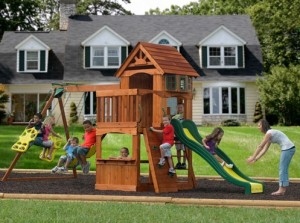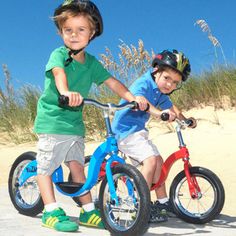 Warm weather brings more opportunity for outdoor activities. Whether they are young children or teens, keep your kids safe and healthy while they enjoy the summer fun.
Warm weather brings more opportunity for outdoor activities. Whether they are young children or teens, keep your kids safe and healthy while they enjoy the summer fun.
Tag: child safety
Safe Shopping with Children
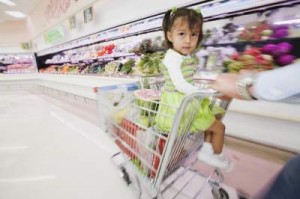 There are definitely some things you should put in your shopping cart in the name of your child’s health and well-being. Your precariously placed child should not be one of them—especially given that more than 20,000 children a year are treated in US emergency departments for reported shopping cart–related injuries! A majority involve either shopping carts tipping over or sudden falls that occurred within the presence of a watchful adult. To play it safer, consider alternatives to toting your kids around in shopping carts, such as the use of a stroller, wagon, baby carrier, or sling; getting your child to walk the aisles; leaving them at home with appropriate supervision, of course; or even shopping online. If you do choose to cart your child, look for the kid-friendly carts that are low to the ground and often conveniently fashioned after fire trucks or race cars. Also buy in to the following rules, which bear a striking and necessary resemblance to those used on just about every amusement park ride we’ve ever been on.
There are definitely some things you should put in your shopping cart in the name of your child’s health and well-being. Your precariously placed child should not be one of them—especially given that more than 20,000 children a year are treated in US emergency departments for reported shopping cart–related injuries! A majority involve either shopping carts tipping over or sudden falls that occurred within the presence of a watchful adult. To play it safer, consider alternatives to toting your kids around in shopping carts, such as the use of a stroller, wagon, baby carrier, or sling; getting your child to walk the aisles; leaving them at home with appropriate supervision, of course; or even shopping online. If you do choose to cart your child, look for the kid-friendly carts that are low to the ground and often conveniently fashioned after fire trucks or race cars. Also buy in to the following rules, which bear a striking and necessary resemblance to those used on just about every amusement park ride we’ve ever been on.
- Buckle Up. All children should be securely buckled up before the ride begins.
- Remain Seated. Children should remain seated at all times.
- In It for the Ride. No one is to ride on the outside of the cart or the ride will come to an immediate halt.
- Keep Contained. All hands and feet are to be kept inside the cart at all times.
- Drive Responsibly. Only responsible adults should be in charge of operating the ride.
How Can I Be Sure Toys are Safe?
- Choose carefully when shopping for toys. Look for toys that are well made and appropriate for your child’s age.
- Watch out for toys that have sharp edges, small parts or sharp points.
- Young children pull, prod and twist toys. Look for toys with tightly secured parts.
- Look for safety information on the toy or label such as “Not recommended for children under 3 years of age,” or “non-toxic” on toys likely to end up in little mouths. Look for “washable/hygienic materials” on stuffed toys and dolls.
- Avoid marbles, balls, games with balls and other toys that have parts smaller than 1 3/4 inches in diameter or smaller than 2 inches long. These products can choke young children if swallowed.
- Keep toys meant for older children away from babies and toddlers.
via Child Safety: Keeping Your Home Safe for Your Baby — FamilyDoctor.org.
Watch Out for Children Heading Back to School
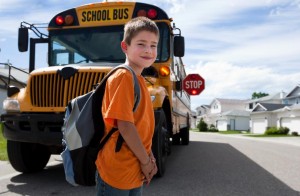 With Labor Day behind us, it’s time for children in Michigan to head back to school. State law requires the new year start after Labor Day.
With Labor Day behind us, it’s time for children in Michigan to head back to school. State law requires the new year start after Labor Day.
Law enforcement officials are reminding drivers to watch out for students walking and getting on and off school busses. National statistics show in 2013, two million more drivers passed school bus stop arms than they did in 2011. Experts blame it on distracted driving.
Each year more than 100 students are killed and 25,000 are hurt in accidents getting to or from school, experts say.
When a bus’ yellow lights are flashing, that means drivers should slow down; when the red lights flash, and a stop sign extends from the side of the bus, drivers in both directions are required to stop.
via Drivers urged to slow down as students head back to school.
Backyard and Pool: Household Safety Checklist
- Are all walkways and outdoor stairways well lit?
- Are all walkways clear of toys, objects, or anything blocking a clear path?
- Are all sidewalks and outdoor stairways clear of concrete cracks or missing pieces?
- Are all garbage cans securely covered?
- Are all swing sets parts free from rust, splinters, and sharp edges?
- Are all parts on swing sets or other outdoor equipment securely fastened?
- Is the surface beneath the swing set soft enough (cushioned with material such as sand, mulch, wood chips, or approved rubber surfacing mats) to absorb the shock of a fall?
- Are all outdoor toys put away in a secure, dry place when not in use?
- Is there climb-proof fencing at least 4 feet (1.2 meters) high on all sides of the pool? Does the fence have a self-closing gate with a childproof lock?
- Have all ladders been removed from an above-ground pool when not in use?
Other Safety Issues
- Have you removed any potentially poisonous houseplants?
- Have you instituted a no-smoking rule in your home to protect kids from environmental tobacco smoke?
- Have you considered possible health risks from — and if indicated, tested for — lead, radon, asbestos, mercury, mold, and carbon monoxide?
- If there are guns in the home, have they been placed in a locked cabinet with the key hidden and the ammunition locked separately?
- Do you always supervise your child around pets, especially dogs?
Child Safety
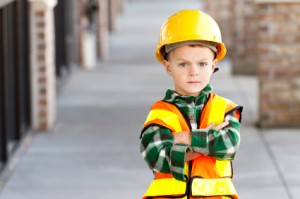 As parents, we want to keep our children safe from harm. Take steps to keep your children safe:
As parents, we want to keep our children safe from harm. Take steps to keep your children safe:
- Install the right child safety seat in your car
- Teach children how to cross the street safely
- Make sure they wear the right gear and equipment for sports
- Install and test smoke alarms
- Store medicines, cleaners and other dangerous substances in locked cabinets
- Babyproof your home
- Don’t leave small children unattended
Keep Children Safe On-line
 Almost all children today have access to the Internet through schools, libraries, community centers, or their home. And most 8 to 18-year-olds, 74 percent, have Internet access from their home computers according to the Kaiser Family Foundation.
Almost all children today have access to the Internet through schools, libraries, community centers, or their home. And most 8 to 18-year-olds, 74 percent, have Internet access from their home computers according to the Kaiser Family Foundation.
Not only do more children have access to the Internet than ever before, but they are using it more, too. Many schools incorporate the Internet into their curricula and encourage online research for projects. But that’s not all kids are doing online. They also email, chat with friends through instant messenger and in chat rooms, play games, create websites and web blogs, and just surf the ‘net.
Even as kids grow savvier in their use of the Internet, it can still be a dangerous place. The good news is that most dangers can be avoided if children and their parents learn about smart Internet use.
School Buses and Child Safety Tips
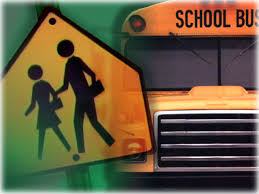 With the start of the new school year motorists should also re-familiarize themselves with the yellow school buses and changes in traffic flow and speed they bring. Drivers should be on the watch for school buses and know school bus safety rules. Parents of young drivers, especially those driving themselves to school for perhaps the first time this school year, should review the rules and warnings with family members. Those big yellow buses transport our most precious commodity–our children–and bus drivers report that motorists need reminders about do’s and don’t’s around school buses every fall. After all, motorists will be sharing the road with school buses during the hectic morning commute.
With the start of the new school year motorists should also re-familiarize themselves with the yellow school buses and changes in traffic flow and speed they bring. Drivers should be on the watch for school buses and know school bus safety rules. Parents of young drivers, especially those driving themselves to school for perhaps the first time this school year, should review the rules and warnings with family members. Those big yellow buses transport our most precious commodity–our children–and bus drivers report that motorists need reminders about do’s and don’t’s around school buses every fall. After all, motorists will be sharing the road with school buses during the hectic morning commute.
Dog Bite Safety Tips for Children
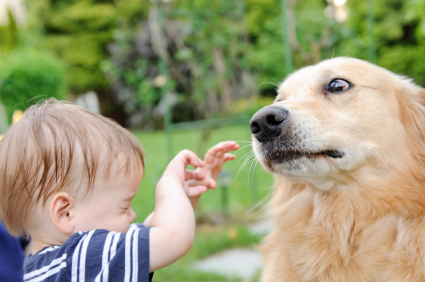 To help prevent children from being bitten by dogs, teach the following basic safety tips and review them regularly:
To help prevent children from being bitten by dogs, teach the following basic safety tips and review them regularly:
- Do not approach an unfamiliar dog.
- Do not run from a dog or scream.
- Remain motionless (e.g., “be still like a tree”) when approached by an unfamiliar dog.
- If knocked over by a dog, roll into a ball and lie still (e.g., “be still like a log”).
- Do not play with a dog unless supervised by an adult.
- Immediately report stray dogs or dogs displaying unusual behavior to an adult.
- Avoid direct eye contact with a dog.
- Do not disturb a dog that is sleeping, eating, or caring for puppies.
- Do not pet a dog without allowing it to see and sniff you first.
- If bitten, immediately report the bite to an adult.
Keep Kids Safe Around the Campfire
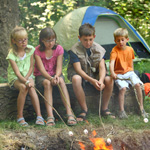 The warmth, light and smells of an outdoor campfire make it an especially memorable activity for children. Anyone who has ever told ghost stories or roasted marshmallows outdoors knows how much fun it can be. While you enjoy the campfire, always keep watch over the site and never let children alone while the fire is burning. Use long sticks or skewers to roast frankfurters or marshmallows. Do not allow any running or roughhousing near the fire.
The warmth, light and smells of an outdoor campfire make it an especially memorable activity for children. Anyone who has ever told ghost stories or roasted marshmallows outdoors knows how much fun it can be. While you enjoy the campfire, always keep watch over the site and never let children alone while the fire is burning. Use long sticks or skewers to roast frankfurters or marshmallows. Do not allow any running or roughhousing near the fire.


